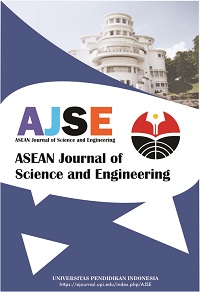Techno-Economic Evaluation of Hyaluronic Acid Production Through Extraction Method using Yellowfin Tuna Eyeball
Abstract
Keywords
Full Text:
PDFReferences
Boas, N. F. (1949). Isolation of hyaluronic acid from the cock's comb. Journal of Biological Chemistry, 181(2), 573-575.
Chong, B. F., Blank, L. M., Mclaughlin, R., and Nielsen, L. K. (2005). Microbial hyaluronic acid production. Applied Microbiology and Biotechnology, 66(4), 341-351.
Maharani, B.S., Yustia, I., Elia, S.H., Girsang, G.C.S., Nandiyanto, A.B.D., and Kurniawan, T. (2021). Review: Synthesis of hyaluronic acid as food supplement and drugs. Journal of Educational, Nutrition, and Culinary Media, 10(1),19-42.
Matsumura, G. (1971). Hyaluronic acid. Tanpakushitsu Kakusan Koso (Protein Nucleic Acid and Enzyme), 16, 233-238.
Meyer, K. (1958). Chemical structure of hyaluronic acid. Federation Proceedings, 17, 1075-1077.
Mizuno, H., Iso, N., Saito, T., Ogawa, H., Sawairi, H., and Saito, M. (1991). Characterization of hyaluronic acid of yellowfin tuna [Thunnus albacares] eyeball. Bulletin of the Japanese Society of Scientific Fisheries (Japan), 57(3), 517-519.
Nandiyanto, A. B. D. (2018). Cost analysis and economic evaluation for the fabrication of activated carbon and silica particles from rice straw waste. Journal of Engineering Science and Technology, 13(6), 1523-1539.
Scott, J. E. (1992). The chemical morphology of the vitreous. Eye, 6(6), 553-555.
Swann, D. A. (1968). Studies on hyaluronic acid: I. The preparation and properties of rooster comb hyaluronic acid. Biochimica et Biophysica Acta (BBA)-General Subjects, 156(1), 17-30.
DOI: https://doi.org/10.17509/ajse.v3i1.38281
Refbacks
- There are currently no refbacks.
Copyright (c) 2021 Universitas Pendidikan Indonesia

This work is licensed under a Creative Commons Attribution-ShareAlike 4.0 International License.












